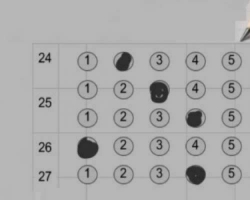According to David Coleman, CEO of the College Board, “It isn’t fair to look at test scores alone.” Hence, the testing organization is expanding the use of a little publicized “adversity score” that actually began in 2015. It will be calculated based on 15 factors, including crime rate and poverty of the student’s high school and neighborhood…The adversity score would be based on a number between 1 and 100, with a student who is average scoring a 50.
Questions come to mind . . . What, exactly, is fairness? Who determines what is fair? What is “average”?Isn’t this practice just another form of “reverse discrimination”? Forbes’ Education editor states: “The adversity score apparently does not include race, but it’s obvious that the score is an attempt to be a proxy for race, thereby dodging claims that it is racially discriminatory . . . Will it be viewed as an algorithm for political correctness, or worse, a form of handicapping that brings students with high scores more harm than good in the long run? The College Board has not divulged how it plans to weight different factors, nor will students be privy to their “adversity” ratings. The fact that the College Board does not want students to know their adversity scores reflects their own discomfort with the concept.
Over the past twenty years, the College Board has undergone a number of alterations to the content and scoring. In 2005 antonym questions were removed, longer reading passages were added, open-ended math questions were added, and calculators became permitted; analogies were also eliminated; the math section was expanded to include “Algebra II. Furthermore, the “new SAT” included an essay as a separate section, distinct from the verbal and mathematical reasoning sections. From 2005 to 2015, the 2400 was the high score. Then, in 2016, the score reverted to 1600. The essay changed from a mandatory persuasive essay with a 25 minute time limit to an optional 50 minute analytical essay.
The organization claims that these changes address the “fairness” issue: ” However, the other widely used college entrance exam, the ACT, has remained much more stable and has been credited for being more curriculum based. Aside from the differences in scoring, (and the “adversity rating”) the SAT content appears much closer to that of ACT than it did almost twenty years ago. At this point, One must wonder whether adversity scores are primarily an attempt to protect the SAT’s market.”


